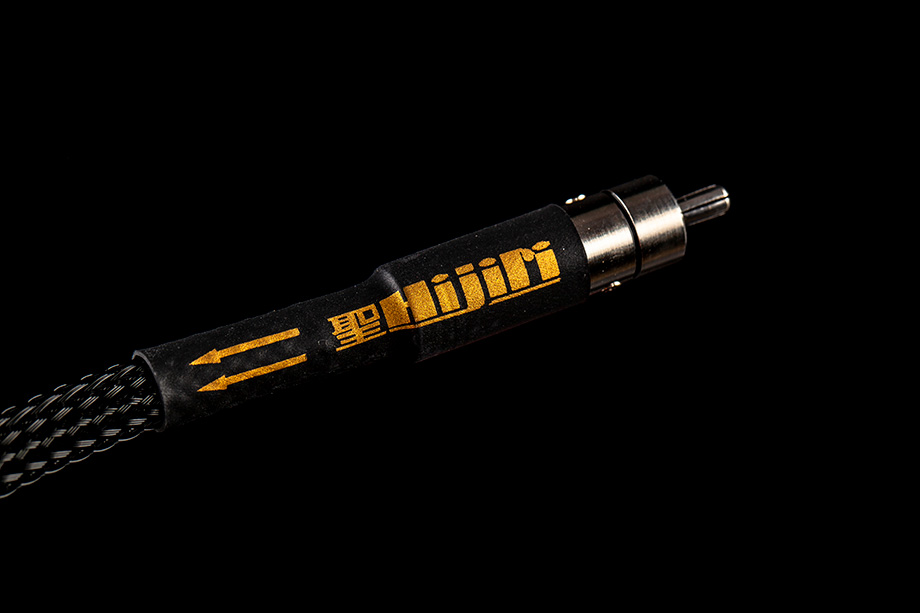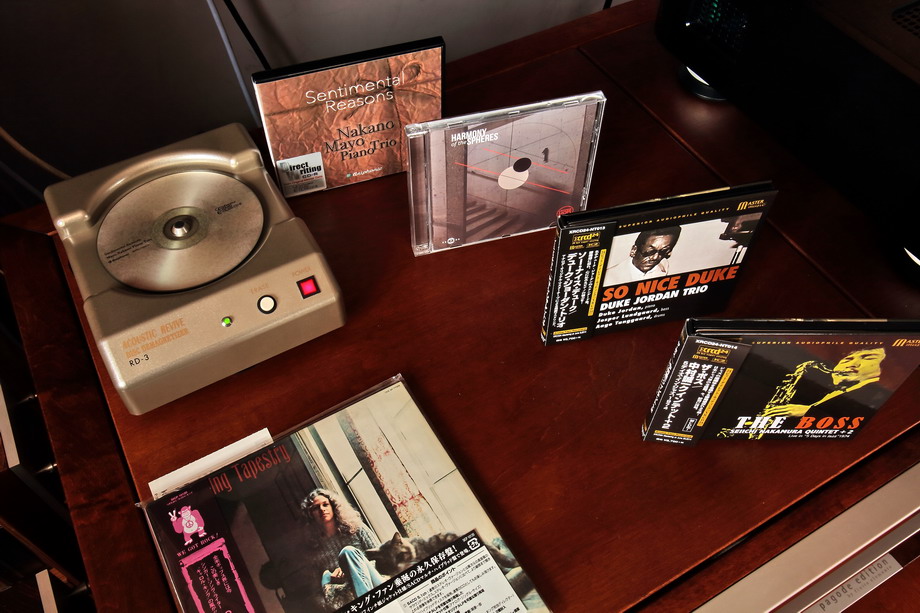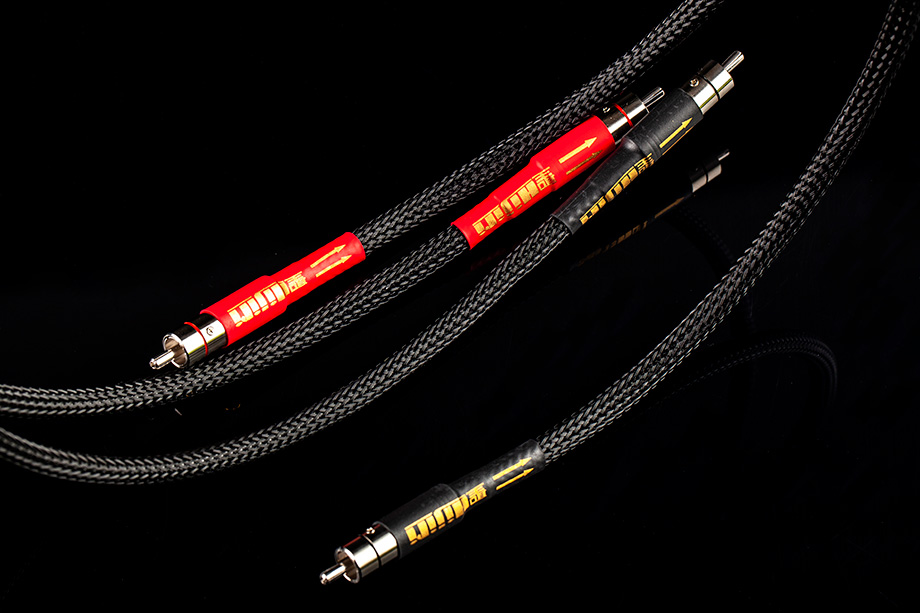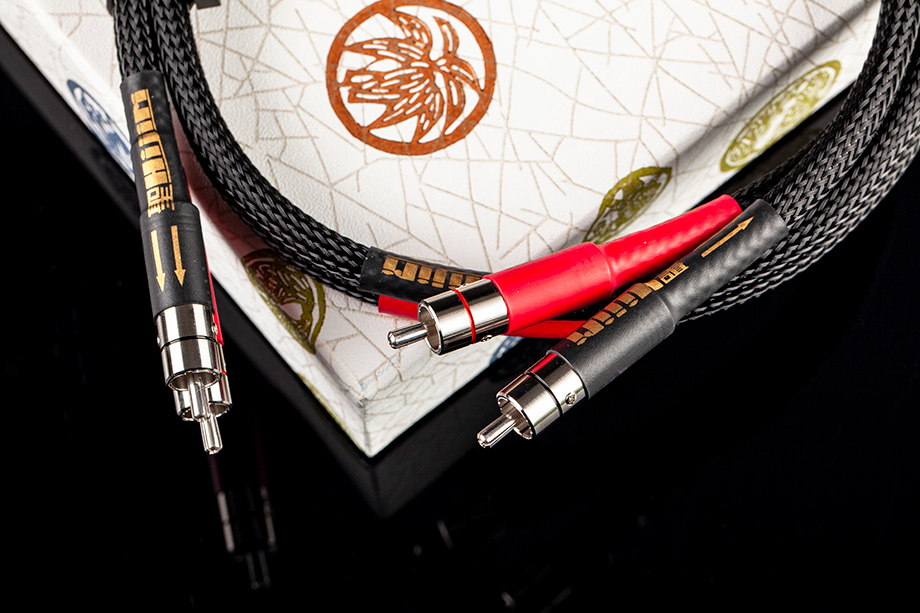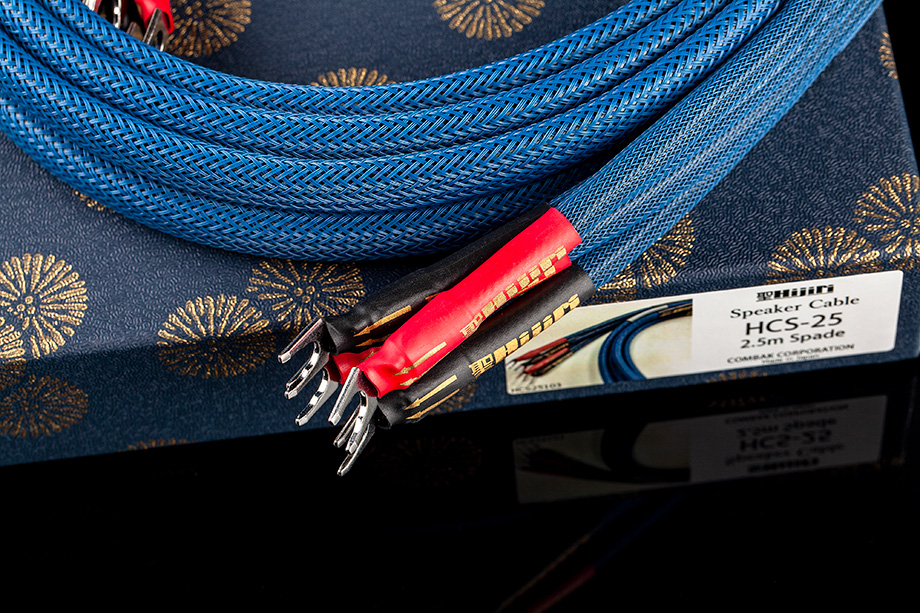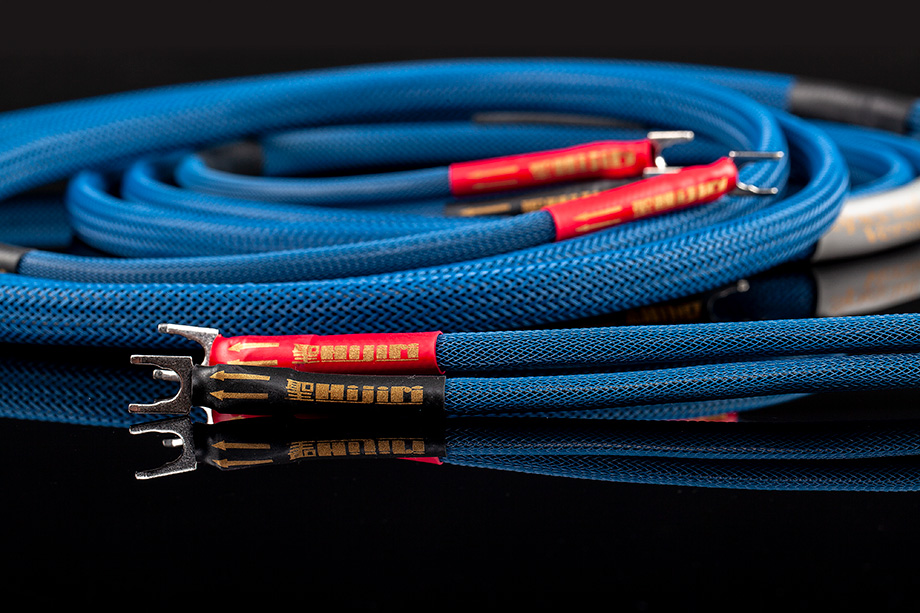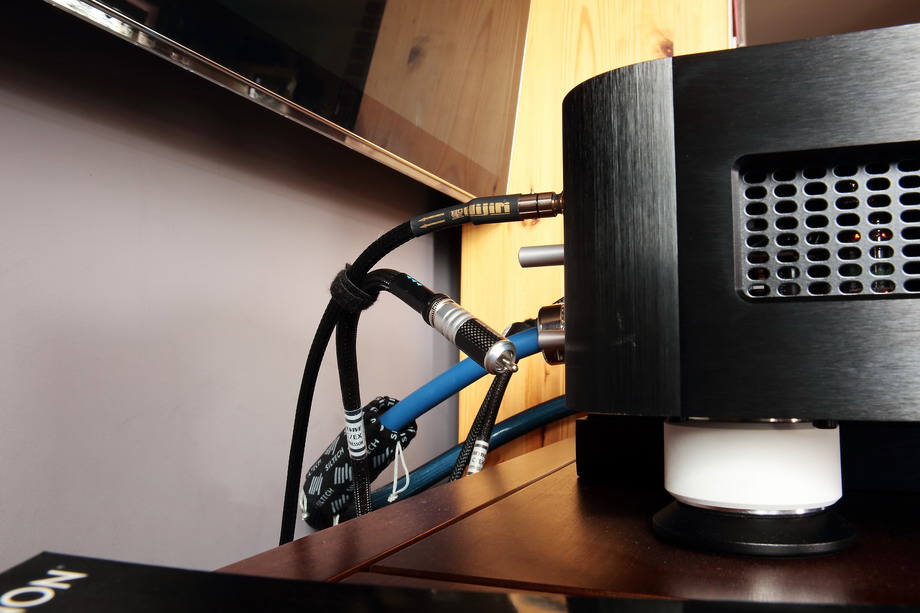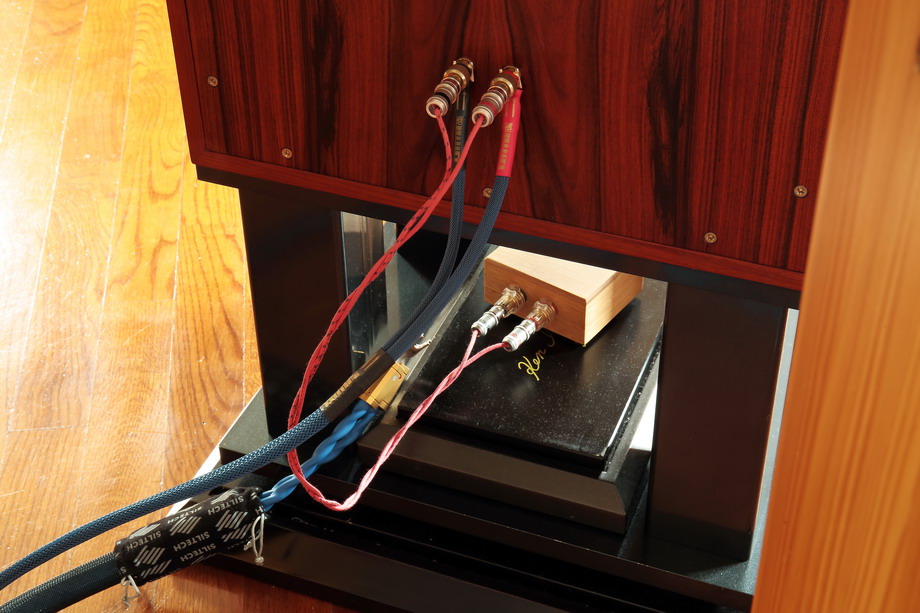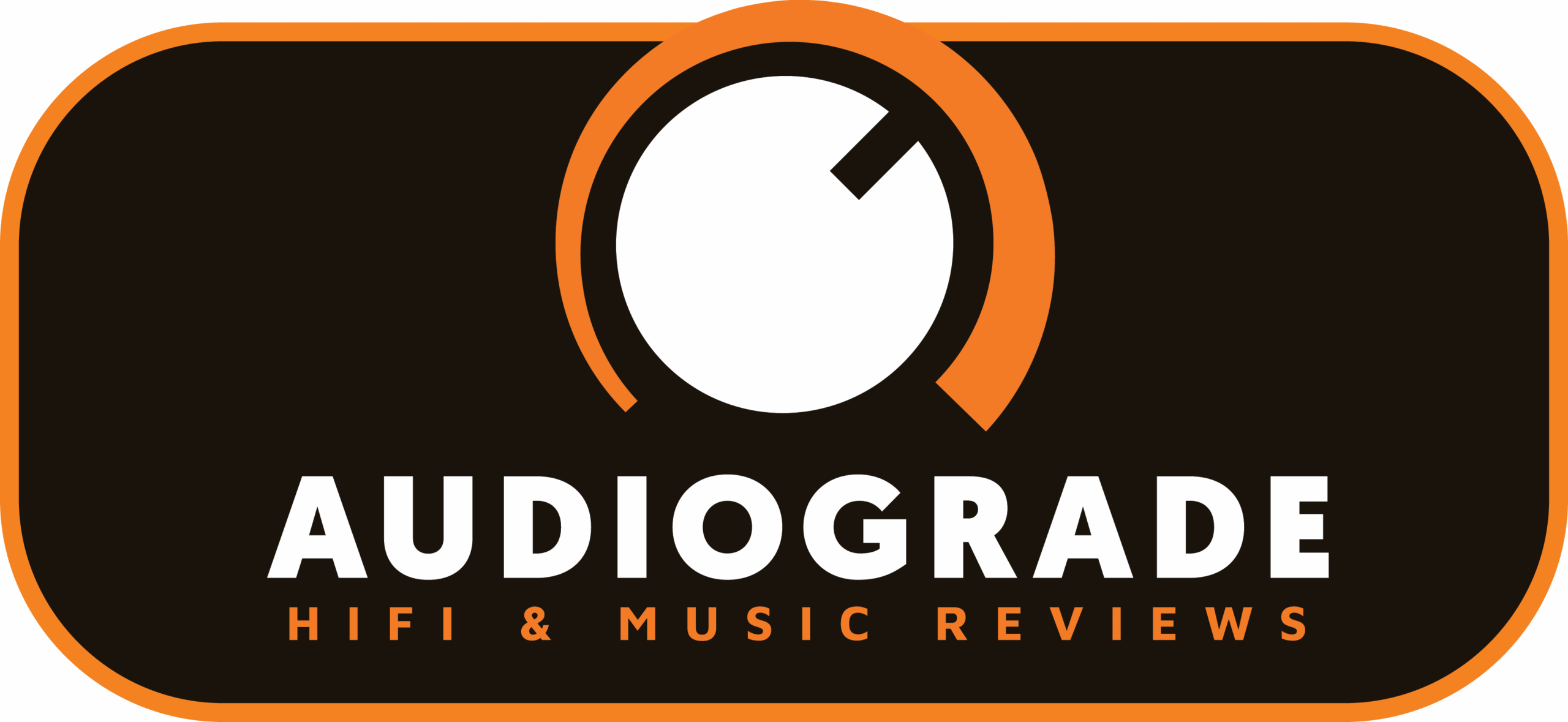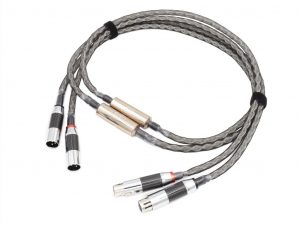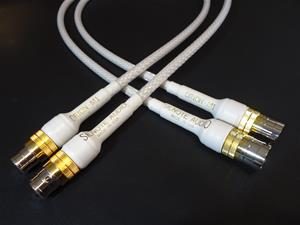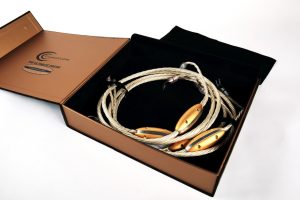Audio companies usually showcase their best, and also the most expensive products. These present company's full potential, its best techniques and technologies, and can also appear as sort of "totem" driven into the ground occupied by tribes worshiping high quality sound.
It is no different with the Japanese brand 聖 Hijiri, belonging to the Combak Corporation and created by Mr. Kazuo Kiuchi (the company also uses the name Hijiri without the Japanese character, but the official one name and logotype combine this character with its English transcription). Initially, 聖 Hijiri was simply the name of Nagomi X-DCH interconnect, but it soon turned out that it was the first product introducing a new brand. Today it includes analogue RCA and XLR interconnects, digital cable and loudspeaker cables as well as power cables.
HCI-R10 + HCS-25
聖 Hijiri in Japanese means 'maestro' or 'important leader'. No wonder that the brand's showcase products are marked with the name "Million", which was taken from the Harmonix sister brand - 聖 Hijiri seems to be its successor. Kiuchi-san devoted much attention to these products which in this context may be considered "inexpensive", I mean the HCI and HCS models. Deciphering of these abbreviations seems simple: H = Hijiri, C = Cable, I = Interconnect, and S = Speaker. The numbers, in turn, tell us the lengths: 10 = 1 m, 25 = 2.5 m.
It should not come as a surprise either that Mr. Kiuchi is reluctant to disclose information regarding materials and technologies behind his new products. Not because they are not important. It is rather that he wants us to pay attention to the music, to the sound, and to hide the technical aspects behind them. For every test I ask him for a few words about the design, after all we have known each other for years. Although every now and then he unravels some small piece of information, I still end up only with only basic knowledge of a product plus whatever I can find out by looking at and touching the new product.
So we know is that these are directional cables made of copper of high purity. All previous Harmonix and 聖 Hijiri products were made of PCOCC copper, so possibly this is also the case. Or not - as we know this type of conductors are no longer produced, so cable manufacturers must look for new types. We do know, however, that connectors of both interconnect and loudspeaker cables were made of this type of copper. Interconnects feature PCOCC rhodium plated copper, used for contact elements, with brass, gold-plated housing. In turn, the spades are gold- and rhodium-plated.
The cables have a small diameter and you can see that, for example, in the outer PVC braid jacket of the speaker cable, there are two separate conductor runs. The balanced XLR interconnects are simply two concentric unbalanced interconnects placed inside one sleeve - that's why the price of the XLR version is almost twice as high as that of the RCA. The cables are quite stiff considering the diameter, but I had no problems connecting components with them. HCI and HCS are available in several standard lengths—0.75 m up to 3 m (IC), and 1.5 to 3 m (SC).
And one more thing—packaging. This is the Achilles heel of many manufacturers. Even very expensive products often come in mediocre, or even ugly and non-functional boxes. Mr. Kiuchi coped with this issue in a unique way. The most expensive Hijiri cables are delivered in wooden boxes decorated by Japanese artists. In turn, HCI and HCS models come in cardboard boxes, but they look like gifts—and that's how one feels when unpacking them. Boxes could be produced somewhere in Europe, but they are not—they are distinguished by details such as: texture, typical Japanese patterns, as well as rice paper the cables are wrapped in inside boxes.
TEST METHODOLOGY
Interconnects connected the Ayon Audio CD-35 High Fidelity Edition Super Audio CD player and the Ayon Audio Spheris III preamplifier. They were compared to the Siltech Triple Crown and Acoustic Revive RCA-1.0 Absolute-FM interconnects.
The speaker cables connected the Soulution 710 power amplifier and the Harbeth M40.1 loudspeakers and were compared to the Siltech Triple Crown speaker cables. In both cases it was a A/B/A comparison with the A and B known. The music samples were up to 2 minutes long, but I also listened to the whole albums.
SOUND
Recordings used for the test (a selection)
- Bach, Violin Concertos, Yehudi Menuhin, EMI/Hi-Q Records HIQXRCD9, XRCD24, CD (1960/2013)
- Carol King, Tapestry, Ode Records/Epic/Sony Music Labels SICP-10120, 7" SACD/CD (1971/2017)
- Depeche Mode A Broken Frame, Mute/Warner-Pioneer Corporation 18P2-2676, CD (1982/1989)
- HotS, Harmony of the Spheres, V-Records 377083, CD (2015); review HERE
- Mayo Nakano Piano Trio, Sentimental Reasons, Briphonic BRPN-7006GL, Extreme Hard Glass CD-R (2017); more HERE
- Peter Gabriel, So, Realworld/Virgin SAPGCD5, SACD/CD (1987/2003)
- Seiichi Nakamura Quintet + 2, The Boss, Master Music XRCD24-NT014, XRCD24 (2014)
HCI-10
The HCI-10 interconnect is, for its price, an incredibly resolving cable. The comparison with much more expensive reference cables shows, of course, that ultimately it comes from another price level, and yet what I remembered after listening session was a sensation of amazing richness of the sound, when 聖 Hijiri was used. These are very smooth cables focused on conveying proper timbre of the sound.
The center of gravity is set slightly higher with them than with the reference cables, i.e. closer to the mid-tones in the 800Hz - 1kHz range. It results in an open sound that is still smooth and even "sweet". It is not really very sweet, but I want to draw your attention to the fact that the cymbals on Peter Gabriel's SACD edition of So from 2003, produced for all markets in Japan, as well as the powerful performance of this instrument on the The Boss album, released by Mr. Kiuchi not only on vinyl, but also on the CD XRCD24, were presented in a way that was a generally accepted compromise between what is possible in home conditions and what needs to be conveyed to listeners.
My point is that compromises necessary while reproducing music at home, i.e. reduced dynamics—the 120dB of a large symphonic orchestra would cause permanent hearing loss—a smaller sound stage and other elements, were not emphasized by this interconnect. Maybe that's why I had an impression that there was nothing missing and that it was a complete sound. This, I believe, is a trademark of Combak Corporation products—smoothness combined with openness. We pay for this with not fully extended bass and focusing attention on the elements closer to us, while what is at the back of the stage is less selective and auxiliary to what is right in front of us.
HCS-25
Speaker cable behaves very similarly, which should not be surprising—they were prepared by the same hand and are made of similar materials. So we get a rich, strong sound with the focus on the timbral accuracy. Even better than with the interconnect you can hear space shifts and dynamics changes are slightly better marked. However, these are minor differences.
The bigger ones are related to a slightly different setting of the tonal balance—in the speaker cable it is placed between midrange and bass. It results in a lower, "heavier" sound. The treble is still open, it's— let me repeat—the same paradigm as in the interconnect. Synthetic bass from the Japanese version of the Abroken Frame by Depeche Mode was deeper and richer, same as the bass guitar on Carol King Tapestry. The double bass recorded during the concert of Seiichi Nakamura Quintet was not, however, given additional weight and it was clear that the producers wanted to convey the atmosphere of the concert, not to make it sound like a studio recording. The HCS-25 let it happen.
So it was a lower and richer sound than with the interconnect. But also less transparent. Not that it actually was not transparent by itself, because when compared with other cables from the same price range it presented itself as very clear sounding. The point is, however, that the HCI-10 interconnect delivered a stronger upper midrange, so I paid less attention to the bass range. The latter is with the HCS-25 speaker cable very rich, full, it has a nice timbre, but it does not go very low—same as the interconnect.
HCI-10 + HCS-25
Each of these cables is very interesting on its own, sounds very good and perfectly communicates emotions. Not only emotions though—the interconnect most of all, but also the speaker cable, are transparent and they also are able to tell us a lot about the recording itself. All you have to do is to listen to them together to be sure that they were so "tuned", that their final listening test was done as a set, not individually. Because, this is the case with well-thought-through products, that as a set they offer something more than any of them introduced into an alien environment.
Their sound is dominated by something that can be called a joy element. It's an open, fresh sound with a rich midrange. It is open to what is happening in the recording. There is no doubt, therefore, that both Nakano Mayo Piano Trio album and the beautiful Harmony of the Spheres album by HOTS, were recorded on an analog tape, and yet the noise characteristic for this medium was manifested in a different way. The album of these complete Japanese freaks released by the Briphonic has much lower noise level and differently placed tonal accents. In turn, the Harmony of the Spheres featured a higher noise level, and a warm, rich midrange.
It's a cable set that renders a wide spread sound. It is not only about the soundstage, although it is very good, but about emotions, and dynamics. "Wide" used by musicians means more or less the same as "open, breathing." It's like an unrestricted playing but with a rounded sound attack so the sound is sweet, but with lots of details and subtleties. The latter do not impose themselves on the listener, but rather hide behind larger events on the stage. Without them, however, the presentation would be significantly poorer. With them it is extremely rich.
Summary
Listening the 聖 Hijiri cable set from the basic price range will be satisfactory, above all, for those who value beautiful tone, "flow" of sound, and nice dynamics. These are not the cables that accentuate the attack, so some rough, powerful music tracks might be a little polished, which is not what everyone needs. But if you listen to the genres I mentioned before with some addition of classical music, which I listened to a lot during this test, it will be a great, hard to match choice.
These are cables with a message, that is, their own sound, that do not pretend to be anything they are not—for example, they do not artificially increase the volume of instruments and do not try to draw our attention to the bass. They go in the direction of direct communication through the extremely smooth midrange and its open upper part. Here everything flows, shimmers and flickers, as if we were suddenly on a sunny beach—alone with the sea basking in the sunlight. For that they deserve the RED Fingerprint award.
HARMONIX | HIJIRI in High Fidelity
- TEST: Harmonix TU-800M TRIBUTE + TU-812MX "Million" Maestro Series HERE | tuning record matte + record tuning clamp
- TEST: 聖 Hijiri H-SLC25R "MILLION" SOPHISTICATED LISTENER'S CHOICE HERE | speaker cable
- TEST: 聖Hijiri SMT 'TAKUMI' MAESTRO HERE | power cable AC
- TEST: 聖Hijiri NAGOMI X-DCH http://highfidelity.pl/@main-644&lang=en | power cable AC
- BEST SOUND AWARD 2015: 聖HIJIRI HGP-10R "MILLION" HERE | analogue interconnect
- TEST: 聖Hijiri HGP-10R "MILLION" HERE | analogue interconnect
- TEST: Harmonix TU-666M "BeauTone" MILLION MAESTRO 20th ANNIVERSARY EDITION HERE | anti-vibration feet
- TEST: Harmonix X-DC STUDIO MASTER MILLION MAESTRO HERE | power cable AC
- TEST: Harmonix X-DC350M2R IMPROVED-VERSION HERE | power cable AC
- TEST: Harmonix RS15-ANV HERE | anti-vibration platform
- KRAKOW SONIC SOCIETY | meeting #72: KAZUO KIUCHI (Combak Corporation) in Krakow HERE
- TEST: Harmonix HARMONIC-STRINGS HS101-EXQ EXQUISITE + α1 HERE | speaker cable + speaker cable supports
- TEST: Harmonix HS-101-GP + HS-101-SLC HERE | interconnect RCA + speaker cable
- TEST: Reimyo + Harmonix + Bravo! HERE | Combak Corporation system
Price (in Poland):
HCI-R10 – 3790 PLN/1m
HCS-25 – 8690 PLN/2.5m
COMBAK CORPORATION
Kazuo Kiuchi ǀ 4-20, Ikego 2-chome, Zushi-shi
Kanagawa 249-0003 ǀ Japan
MADE IN JAPAN
Provided for test by
Review: Wojciech Pacuła
Translation: Marek Dyba
Pictures: Wojciech Pacula | Bartosz Łuczak/Piksel Studio




